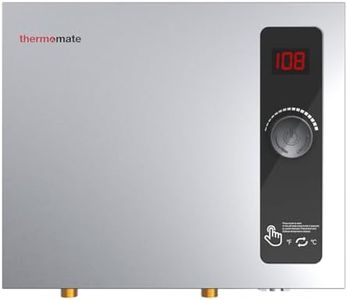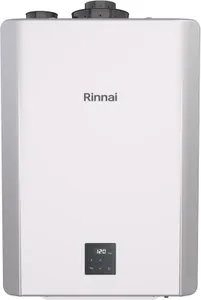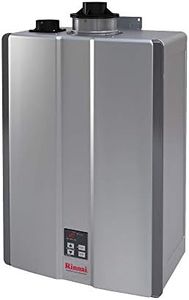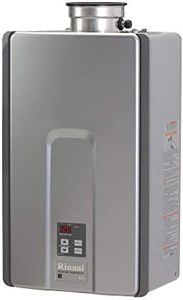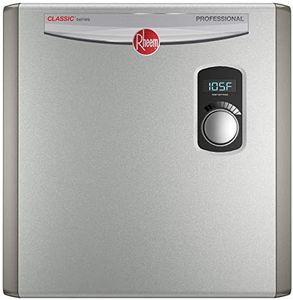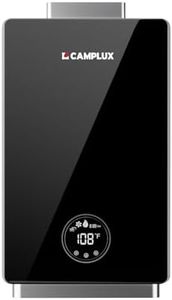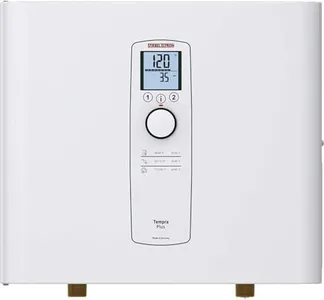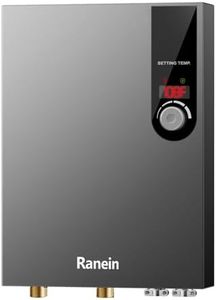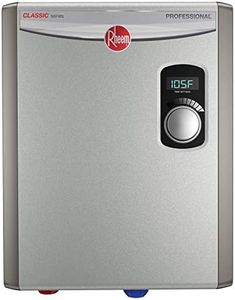10 Best Tankless Water Heaters 2025 in Canada
Our technology thoroughly searches through the online shopping world, reviewing hundreds of sites. We then process and analyze this information, updating in real-time to bring you the latest top-rated products. This way, you always get the best and most current options available.

Our Top Picks
Winner
FOGATTI RV Tankless Water Heater, InstaShower 8 Plus, Gen 2, with 15 x 15 inches White Door and Remote Controller, DC 12V, Best High Altitude Performance, Ideal for RVers' Everyday Use
The FOGATTI RV Tankless Water Heater is designed specifically for RV users who want a reliable and continuous hot water supply without the limitations of traditional tank heaters. It runs on propane, which is convenient for RVs since it doesn't rely on electric power, making it suitable for off-grid or remote travel. With a maximum flow rate of 2.9 gallons per minute, it provides enough hot water for comfortable showers without running out quickly, unlike tank heaters that store a limited amount of hot water.
This model stands out for its high altitude capability, working smoothly even at places like Denver’s 9,800-foot elevation thanks to staged combustion technology. The maximum temperature it reaches is 123°F, which is warm enough for typical RV use. It includes safety features such as automatic gas shut-off, overheat protection, and freeze protection, helping to avoid common issues during use.
Installation-wise, it fits standard RV water heater openings (13 x 13 inches) and comes with a 15 x 15-inch door, making it compatible with many existing RV setups without major modifications. The included remote controller adds convenience by allowing easy temperature adjustments from inside the RV. Its 12V DC power and built-in pressure relief valve simplify integration and reduce extra parts needed. While the flow rate is typical for RV units, the heater requires propane and 12V power, which could necessitate modifications depending on your RV setup. The maximum temperature cap balances comfort and safety, but may not suit users wanting hotter water. At 12 kg, it is heavier than some alternatives, so installation support should be considered. This heater represents a solid choice for RVers seeking efficient, continuous hot water with easy installation and comprehensive safety features, especially suitable for high altitude and propane use during adventurous travels.
Ranein Natural Gas Tankless Water Heater with Vent Pipe, Indoor Max 4.3 GPM, 100,000 BTU Instant Hot Water Heater
The Ranein Natural Gas Tankless Water Heater is a solid choice if you want continuous hot water without waiting for a tank to heat up. It offers a flow rate of 4.3 gallons per minute, which is enough to supply 2-3 outlets like a bathroom, kitchen, or bar. Powered by natural gas with a strong 100,000 BTU heating capacity, it efficiently heats water on demand, saving energy compared to traditional tank heaters. This model includes a vent pipe, which can save you money and simplifies installation, but it’s designed for indoor use and isn’t recommended at higher altitudes above 2,000 feet.
The heater also features smart modes that adjust water temperature based on the season or specific needs like kitchen or bathtub use, offering convenience and comfort. Measuring about 43 x 65 cm and weighing around 11.5 kg, it's compact enough for wall mounting, though professional installation is recommended to meet safety rules. Its maximum temperature caps at 100°F, which might feel lukewarm if you prefer hotter showers.
This unit suits homeowners looking for a reliable, moderately priced gas tankless water heater with useful temperature controls, especially if you have typical household water demands and want to avoid the bulk of traditional tanks.
Buying Guide for the Best Tankless Water Heaters
Choosing a tankless water heater can be a great way to enjoy endless hot water while saving space and energy. Unlike traditional water heaters with large tanks, tankless models heat water only when you need it, which can be more efficient and convenient. To find the best fit for your home, it's important to understand the main features and specifications that affect performance, installation, and long-term satisfaction. By focusing on your household's hot water needs and the characteristics of your home, you can select a tankless water heater that delivers comfort and reliability.Most Popular Categories Right Now



